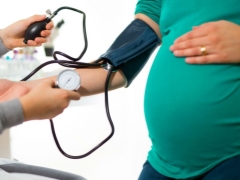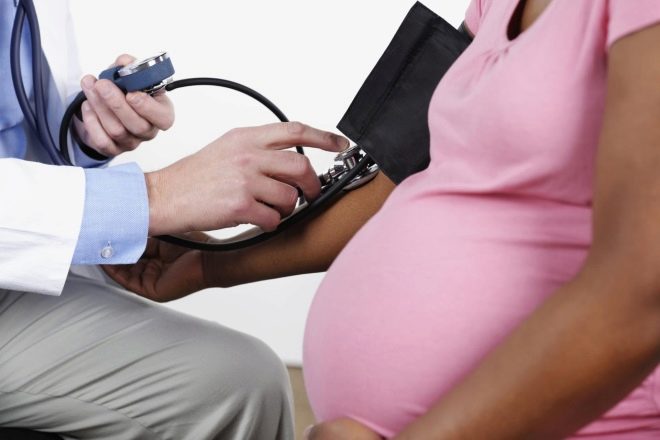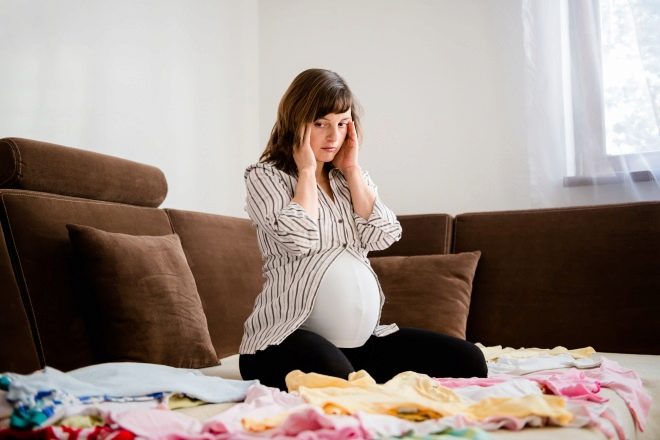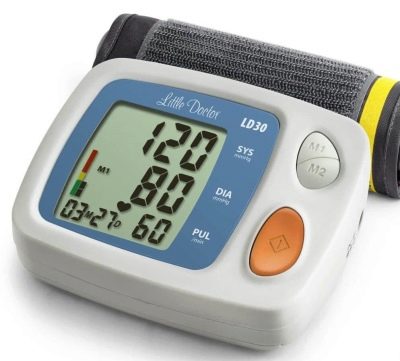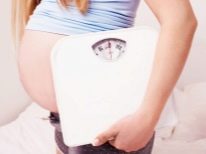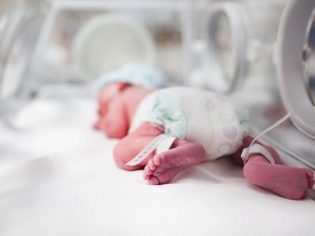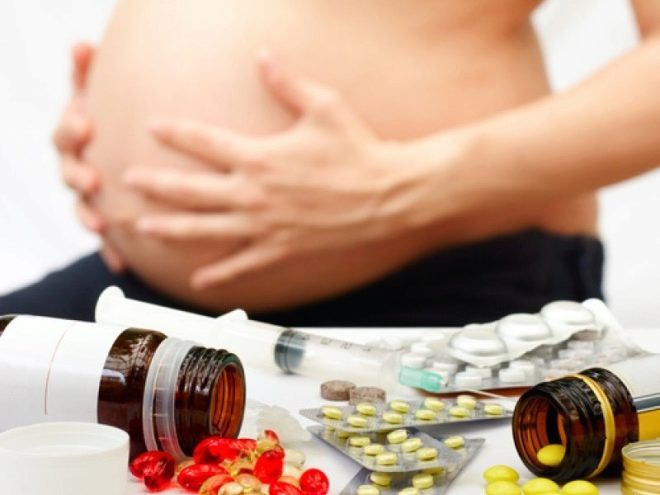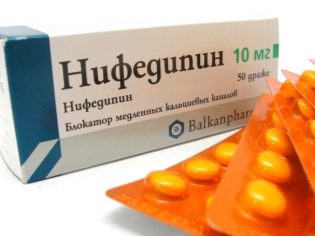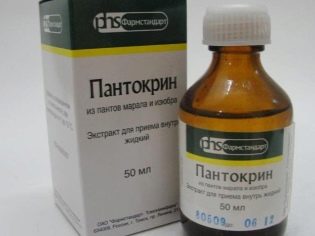What should be the normal pressure during pregnancy and what to do with abnormalities?
Blood pressure is an important indicator of the health and condition of a pregnant woman. It is measured at each visit to the obstetrician-gynecologist for the entire term of the baby's birth.
What should be the pressure of future mothers in the norm and what to do if the values deviate from normal, we will tell in this material.
Norms
Indicators that are measured in pregnant women with a tonometer are called arterial or blood pressure. In essence, it is determined by the force with which blood pushes against the inner walls of blood vessels.
The result is expressed in two numbers written by a fraction. The first number is top pressure or systolic - is an indicator of blood pressure at the time of tension of the heart muscle and its reduction. The second number is the so-called lower pressure or diastolic - is an indicator of pressure at the time of relaxation of the heart.
The level of pressure depends on the volume of blood that pumps the heart in a second. It can affect the time of day, and the general well-being of a woman, and her weight, and psychological state.
If a woman is nervous, then the pressure rises. Food and drinks can affect pressure, for example, strong tea increases the level of blood pressure, and medication taken by the expectant mother also affects the performance.
During pregnancy, the woman's body works in a different way, all the organs and systems “work” at the limit of their abilities in order to save the baby and provide him with everything necessary for normal growth and development.
Blood pressure on the blood vessels of future mothers depends on specific factors that are peculiar only to women in the “interesting position”.
Thus, in the first trimester, a large amount of the hormone progesterone is produced in its body, which is necessary for the preservation of the embryo and the creation of all conditions for its development.
However, the side effect of this hormone is relaxation of the vascular walls. therefore in the first trimester, the pressure may be slightly reduced. It starts to increase in the period from 28 to 32 week, when the volume of the circulating blood of the mother increases by more than 2 times.
Permissible fluctuations are considered to be an increase in pressure in the first half of pregnancy by 5–15 mm Hg relative to the systolic norm and by 5–10 mm Hg - diastolic pressure. In general, a pressure of 120/80 is considered normal.
Table of norms of blood pressure, adopted by WHO:
condition | The level of systolic pressure, mm. Hg Art. | The level of diastolic pressure, mm. Hg Art. |
Reduced pressure hypotension | Less than 100 | Less than 60 |
Optimal condition | 100-119 | 60-79 |
Norm | 120 | 80 |
High blood pressure (mild condition) | 130-159 | 85-99 |
Moderate hypertension | 160-179 | 100-109 |
Severe hypertension | 180 and above | 110 and up |
What should be the pressure in a pregnant woman is unambiguously difficult to answer. In order to better understand what is happening with this most important indicator during the gestation period, a woman should know what pressure is normal for her personally.
So, there are ladies who have "working", their own blood pressure is always in the range of 90 to 60 or 100 to 70.At the same time, they are vigorous, cheerful, feel well, and such hypotension will not be considered pathological.
In such hypotension women, a rise in pressure to “almost normal” values, for example, up to 130 by 80, will be accompanied by signs of hypertension. And for a woman for whom the norm is 120 by 80, such a slight increase in the level of the upper pressure (by 10 mm Hg) will not cause any inconvenience.
Sometimes blood pressure fluctuations are accompanied by symptoms such as headaches, nausea, dizziness, but often, a pregnant woman does not even realize that her blood pressure level is far from normal.
That is why doctors try to measure this indicator as often as possible, at each meeting with the expectant mother, and also recommend that women in the position do it themselves between visits to the antenatal clinic.
Reasons for raising
The volume of blood flow increases in all women who are waiting for the baby. But not everyone is under pressure because of this. The occurrence of hypertension is affected by many additional factors that automatically make a woman a high-risk group:
- genetic predisposition, heredity;
- multiple pregnancy;
- obesity and large weight gain, extra pounds before pregnancy;
- the presence of diabetes and gestational diabetes;
- diseases of the cardiovascular system;
- chronic kidney and liver disease;
- habitual hypertension (in the absence of concomitant diseases);
- stress, prolonged adverse psychological effects;
- irrational mode - insufficient sleep, plenty of salty foods in the diet;
- The age of the future mother is over 35 years old or less than 18 years old.
Reasons for the decline
Decreased pressure has physiological causes. Thus, nature provided that in the first trimester of pregnancy there was no strong load on the vessels that had just formed - the vessels of the new organ - the placenta.
A natural decrease is indicated if fluctuation occurs within 10 millimeters of mercury. If a woman with a normal pressure of 120 to 80 blood pressure drops to readings 90 and 60, then this is just as alarming as the growth rate. Causes of hypotension may be:
- the sedentary lifestyle of a woman when work or hobby is associated with a long stay in one position almost motionless;
- prolonged stress, distress, emotional distress;
- condition of blood loss after bleeding or surgery;
- dehydration states;
- prolonged lack of sleep;
- malnutrition;
- cardiovascular diseases;
- ulcerative diseases of the digestive system;
- insufficient functioning of the thyroid gland;
- infectious diseases in the acute stage.
Danger and risks
The greatest danger that lies in the increase in pressure during pregnancy is preeclampsia. With it, a woman usually develops edema, and the presence of protein in the urine is recorded in the laboratory. Gestosis is dangerous for both women and children. It can cause the death of the mother and fetus.
High pressure creates spastic vascular readiness, and spasms cause hemorrhages in various organs, including the brain. The likelihood of thrombosis, dehydration. The most terrible consequence - premature detachment of the placenta and fetal death of the baby.
Statistics disappointing - every tenth woman with mild preeclampsia gives birth prematurely, sometimes the child is not yet ready for independent living.
With moderate preeclampsia, two out of ten women experience preterm labor, and in severe cases, three or four future mothers of their ten enter the patrimonial department much earlier than scheduled.
Prolonged preeclampsia, which occurs in a measured manner, without abrupt pressure surges, often causes intrauterine oxygen deficiency, and hypoxia develops in the child.The state of hypoxia imposes its imprint on the mental and physical development of the baby, on its immunity.
Danger of increased pressure in the process of childbirth. It creates the threat of severe bleeding, great blood loss and even death of a woman. Therefore, it is often enough to make a decision on the early conduct of a cesarean section in order to save the baby and his mother.
If the increased pressure is not accompanied by the appearance of protein in the urine and edema, then there is no talk of preeclampsia as such. Classic gestational hypertension is less dangerous, but it certainly causes harm to the child and the mother, and requires intervention and assistance.
The danger of low pressure lies in the fact that blood when hypotension comes to the organs much slower and in smaller quantities. This is fraught with the development of oxygen starvation as the tissues of the mother (brain, heart), and hypoxia of the fetus.
A future mother with low blood pressure has a higher risk of developing placental insufficiency, intrauterine growth retardation of the baby, low birth weight, and also increases the risk of miscarriage in the early period or preterm birth in the late.
Low pressure aggravates the course of toxemia in pregnant women, and also indirectly affects the labor force - in women with pathologically low pressure during childbirth, weakness of labor forces often occurs, which leads to an emergency cesarean section. Recovery after childbirth in such moms is slower, the risks of complications such as prolonged bleeding are higher.
Symptoms of hypertension
A woman can guess the increased pressure by some characteristic signs:
- headache, moreover, it increases with increasing pressure;
- the feeling of flashing flies before his eyes;
- bouts of sudden dizziness;
- feeling of nausea, which in some cases may be accompanied by the occurrence of gag reflex;
- noise in ears;
- red spots on the skin of the face, neck and chest.
Sometimes hypertension occurs without symptoms at all, and this is considered the most dangerous. A negative impact on a child can go unnoticed for a long time due to the lack of objective complaints.
Symptoms of hypotension
The decrease in pressure, if it occurs gradually, also most often takes place unnoticed. But a sharp decrease or decrease is significantly below the normal level. may be accompanied by such symptoms:
- feeling of heaviness in the head, aggravated by movement;
- increased drowsiness and feeling of weakness, fatigue;
- the appearance of shortness of breath, which becomes more pronounced even with a slight increase in physical activity;
- nausea and dizziness with a sharp rise from a horizontal position, as well as a sharp change in body position in space;
- episodes of unconsciousness, fainting.
How to normalize blood pressure?
High
Independently make a decision on the choice of a way to normalize blood pressure during pregnancy is dangerous. It is better to contact your doctor.
To reduce blood pressure values, complex treatment is usually prescribed, which includes lifestyle correction and medication. Its place in the treatment of high blood pressure is given to folk remedies. Doctors in most cases do not object to the use of some of them, especially since The choice of medication during pregnancy is very limited.
The best effect can be achieved only if the treatment is truly comprehensive, and the woman fulfills all the recommendations of the doctor.
If problems with an increase in blood pressure begin in the first trimester, doctors try to hospitalize the pregnant woman and treat her under round-the-clock supervision. From week 28, when the pressure in most pregnant women rises, women with high blood pressure are also subject to hospitalization.
In 3 trimester after 36 weeks, a woman may also receive a referral to the hospital for antenatal hospitalization, because doctors need time to bring her pressure level to a relative rate before delivery or prepare for a planned cesarean section, which is carried out not for 40 weeks, but for a couple of weeks earlier.
General recommendations for lowering blood pressure include adherence to the day, A woman needs at least 8-10 hours of night sleep and an hour and a half of sleep during the day.
It is necessary to limit the load on the nervous system, to eliminate all stress factors, to limit heavy physical exertion. The abundance of salt should be excluded from the diet, consuming no more than five grams of this product per day.
It is necessary to monitor the drinking regime, not to drink a lot of liquid, but also not to allow dehydration.
Expectant mothers with high blood pressure should take easy walks in the fresh air. It is dangerous to take hot baths with high pressure, it is better to restrict yourself to a warm shower.
From folk remedies you can use natural fresh juices - carrot, lingonberry, cranberry, mountain ash, eat hawthorn fruits, boil black chokeberry jelly, make herbal teas with chamomile, valerian, motherwort and melissa, as well as mint leaves and drink them warm.
As soon as the doctor diagnosed hypertension in the woman, she should acquire a useful device — a home blood pressure monitor — to measure pressure independently and twice a day, in the mornings and evenings. write the results in such a label:
Times of Day | HELL - right and leky arm | Wellbeing | Taken drugs or measures |
10.00 | 135 to 80 135 to 80 | No complaints, all calm | Herbal tea with motherwort |
18.00 | 140 to 90 140 to 90 | Headache, fatigue, dizziness, nervous | Dopegit 1 tablet |
It is important to measure the pressure on two hands, since the difference between the indicators in itself is a reason for going to a doctor. The completed plate must be taken with you to the next appointment so that the doctor can assess the dynamics of blood pressure and make a more accurate decision on the appointment or cancellation of medicines or the need for hospitalization.
If a pregnant woman, in addition to pressure, has other signs of preeclampsia - edema, then you should get another sign in which she will be able to indicate daily how much liquid was drunk, and how much was allocated. This will help to understand how the kidneys work and whether serious complications have begun.
The choice of high-pressure medication for future mothers is very limited, most drugs with this effect are very harmful for a growing child, teratogenic. Therefore, doctors are trying to prescribe only those few tools that have already been tested for many years of medical practice.
If the pressure rises slightly, the woman will be prescribed medications with a slight sedative effect — motherwort, Valerian tablets, and also natural medications. «PersenOr Novopassit. Good for minor hypertension. «No-shpa». It is prescribed for any period of pregnancy in individual dosages.
For women in the first and second trimester, if no other measures are taken, they are prescribed "Dopegit" in pills. Late reception may be recommended. "Nifedipine".
In the hospital, the choice of medicines will be wider, under the supervision of a doctor, other medicines that are not recommended at home are not recommended, as well as droppers with drugs that improve the condition of blood vessels and nutrition of cells and tissues, for example, «Actovegin».
Low
If the pressure is reduced slightly, and the woman feels good, then doctors usually choose waiting tactics. A future mother is recommended to drink hot sweet tea while eating, to eat a small piece of chocolate.
Usually this allows you to normalize a slight decrease, for example, 100 to 50 or 90 to 50.If the decrease is significant or occurs abruptly, even to fainting, then complex treatment is prescribed.
To increase blood pressure are also used folk remedies and medicines. But for a start, as in the case of hypertension, It is recommended to revise the lifestyle. Sleep should be sufficient in time (at least 9-10 hours at night and one and a half hours in the daytime). Useful walks should move more, because a sedentary lifestyle only contributes to lower blood pressure.
A woman with a low pressure should not get up sharply from a lying and sitting position, should be lifted carefully, gradually. If dizzy, you should lie down or sit down and slightly raise the legs, putting a ottoman or a large pillow under them, for example.
During the gymnastics, which must necessarily be in the daily life of a pregnant woman, you should not do exercises related to body turns and bends. If the blood pressure is low, it is best to sleep with an open window, providing constant access to fresh air. By the way walks in the daytime should be long enough - not less than an hour.
Expectant mothers with hypotension is useful to engage in swimming, it will be good if a woman near the house can sign up for aqua aerobics courses.
Nutrition with reduced pressure should be full, rich in proteins, carbohydrates and healthy fats, as well as vitamins and microelements. Pregnant necessarily should start taking multivitamin complexes, designed specifically for future mothers, if earlier she did not.
You can quickly raise the fallen pressure by taking a contrast shower, as well as mastering a simple acupressure. It consists of circular movements of the index fingers clockwise at two strategic points — the center between the upper lip and the nose, and also the center between the lower lip and the chin.
Experimenting with the shower, it is not necessary to set the temperature of the water so that the contrast is too pronounced, it can provoke the threat of abortion, increased uterine tone.
Medicinal plants, from which tea can be made to increase pressure, grow everywhere. In extreme cases, they can be bought at any pharmacy. This, for example, wild rose (fruits and flowers). Tea from it, brewed in a thermos, can be taken 3-4 times a day in small portions in the form of heat. The main thing that he was not too strong.
Of other folk remedies, raspberry and currant are used to increase the pressure. Berries can be eaten in its pure form, and you can make them jam or compote.
Useful honey, walnuts, dried fruits. But the tips are more salty, because salt increases the pressure, do not rush to perform. Really, salt contributes to an increase in blood pressure on the walls of blood vessels, but it also causes swelling, and this is completely undesirable for a woman in an “interesting position."
Medicines to increase the pressure are prescribed by a doctor when none of the methods described above helps or attacks of falling blood pressure have become very frequent.
All drugs that are able to increase the pressure, theoretically are a danger to the placenta, because they act about the same way - narrowing the lumen of blood vessels. Therefore, drugs - an extreme measure, when the risk from their impact becomes less than the risk of losing pregnancy due to low blood pressure.
For the provision of urgent assistance is used drug "Cordiamin" in drops. However, it is only suitable for emergency care, and can not be a means for permanent use. For longer use, recommended lemongrass, tincture of Eleutherococcus and Pantocrinum.
Women with pathologically reduced pressure should also make independent measurements of blood pressure in both hands twice a day, the data are recorded in the table and must be shown to the doctor at the next appointment.
A woman with low blood pressure will have to get a dispensary registration with a neurologist, these are the recommendations of the Ministry of Health. But future mothers with such a problem are less likely to be hospitalized than women with high blood pressure.
Most cases of hypotension can be treated at home, in the usual conditions for the expectant mother. Only those women whose pressure surges downward are too sharp and are accompanied by fainting are sent to the hospital.
About what you need to know about blood pressure during pregnancy, see the next video.
